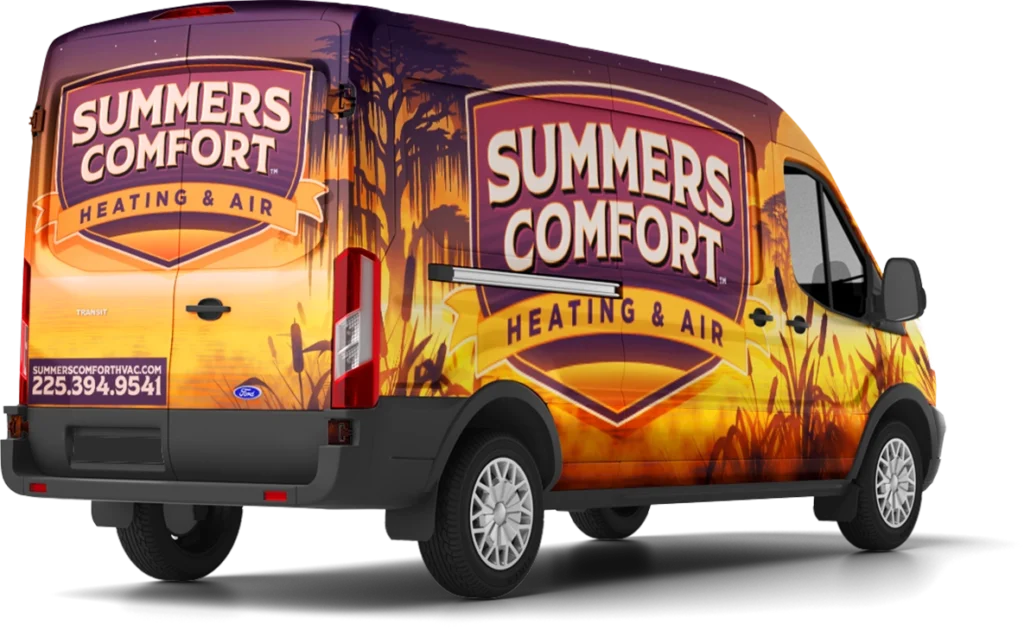A common question homeowners ask is, what is forced air heating? I hear it a lot when I’m out on calls. People want to know if it’s the same as central heat, if it’s efficient, and whether it’s right for their home. The answer is straightforward: homeowners across the U.S. rely on this type of central heating system, and they’ve done so for decades. But there’s more to the story than just warm air blowing from a vent.
What Is Forced Air Heating?
In simple terms, forced air heating uses a furnace to heat air, then distributes that air through ducts and vents across the home. The “forced” part refers to the blower fan that pushes warm air into every room.
You’ve likely experienced it without even realizing it. When you hear the gentle hum of the furnace kick on and feel air flowing from your registers, that’s forced air heating in action.
Main Components of a Forced Air System
A ducted heating system usually includes:
A furnace powered by gas, electricity, or oil.
A blower fan that pushes heated air through ducts.
A ductwork system that carries air to each room.
Vents or registers where the air enters your living space.
As someone who works on these systems every day, I can tell you that a clean, well-sealed duct network makes a huge difference. I’ve seen homes lose 20–30% of their heat through leaky ducts alone.
How Does Forced Air Heating Work?
The process is fairly straightforward. The furnace heats air, the blower moves it through ducts, and vents release it into each room. Once the air cools down, it returns through cold-air returns to the furnace, where the cycle begins again.
That constant circulation is part of why central heating systems are so popular. Not only do they warm your home, but they can also filter air and, if paired with a humidifier, add needed moisture during winter.
(Side note: if you’ve ever stood over a vent on a chilly morning, you know how good that warm air feels.)
Benefits of Forced Air Heating
So, why do so many homes rely on this system? There are a few good reasons:
Fast heating: Warm air spreads quickly through the house.
Integrated comfort: The same ducts can be used for central cooling.
Air quality add-ons: Filters, humidifiers, and purifiers can all be connected.
Affordability: Furnaces are generally less costly to install than radiant or geothermal systems.
Common Drawbacks to Consider
Of course, no system is perfect. Forced air heating has a few drawbacks:
Uneven temperatures: Rooms farther from the furnace may feel cooler.
Noise: Some systems are louder than radiant heating.
Energy loss: Duct leaks can waste a significant amount of heat.
That’s why regular inspections and duct sealing matter more than most people realize.
Seasonal Use in Emergencies
Forced air heating does more than keep your home comfortable — it plays a role in safety during extreme cold. Resources like Ready.gov’s winter preparedness guide remind homeowners to plan ahead for power outages and winter storms. A reliable heating system can make all the difference when temperatures drop unexpectedly.
What Is Forced Air Heating vs. Other Systems?
People often ask me how forced air compares to radiant heating, boilers, or heat pumps. Each has pros and cons. Radiant heat feels comfortable but is expensive to install. Boilers deliver even warmth but don’t double as cooling systems. Heat pumps are efficient but can struggle in extreme cold.
Forced air heating, on the other hand, balances cost, speed, and flexibility. It’s no wonder it’s the system you’ll find in most modern homes.
Practical Context for Homeowners
According to the U.S. Department of Energy, most U.S. homes are heated with furnaces or boilers. Furnaces heat air and distribute it through ducts, which is the foundation of forced air heating.
Maintenance Tips for Forced Air Systems
Knowing how forced air heating works is only half the story. Keeping it efficient requires maintenance. Here are a few things you can do:
Change filters regularly — I recommend every 1–3 months.
Seal ducts and ensure registers aren’t blocked.
Schedule annual furnace tune-ups to catch problems early.
Keep an eye on thermostat performance.
I’ve seen homeowners avoid major breakdowns simply by replacing a dirty filter on time. Little steps make a big difference.
When to Call a Professional
If your furnace blows cold air, runs constantly, or you notice strange noises, it needs attention. Sometimes a repair fixes it, but with older systems a full upgrade may be the smarter choice. Our furnace replacement services make that transition simple.
Contact Summers Comfort Heating & Air
At Summers Comfort Heating & Air, we help families keep their forced air systems running smoothly with repairs, maintenance, and replacement options. Contact us today to schedule service and make sure your furnace is ready for whatever winter brings.
Final Thoughts: What Is Forced Air Heating?
So, what is forced air heating? It’s a furnace-powered system that warms air and distributes it through ducts to heat your home. It’s fast, flexible, and reliable — but it also needs proper care to avoid energy waste and uneven comfort. With the right maintenance and professional support, a central furnace system can keep your home safe and comfortable for decades.
If you live in or around Gastonia, NC, contact us today. We’ll make sure your system is ready for the season and working at its best.

